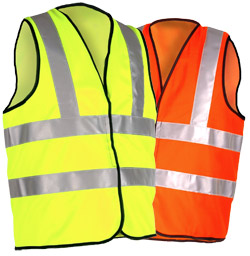Riding Mowers (Download)
Riding Mowers History The first lawn mower was invented by Edwin Budding in 1827. The first riding mower was produced by JP Engineering. Numerous manufacturers entered the field with gasoline-driven mowers after the turn of the century. Most use the horizontal rotating blade system, usually with multiple blades. *Adapted from http://www.oldlawnmowerclub.co.uk/mowinfo/mowhist.htm Description A riding mower is a machine that uses 1 or more revolving blades to cut a lawn at an even length. Riding mowers are a popular alternative to push mowers. The operator is provided with a seat and controls on the mower and ‘rides’ on the machine. * Adapted from http://www.oldlawnmowerclub.co.uk/mowinfo/mowhist.htm Description Riding mowers typically have an opening in the side or rear where the cut grass is expelled. Some have a grass- catcher attachment at the opening to bag the grass clippings. Safety Concerns The rotating blades of mowers contribute to lacerations, amputations, and the possibility of death. Objects such as stones or twigs, may be picked up by the mower blades and projected at high speed. Mowers can be very loud, contributing to a degree of hearing loss. Work areas that are sloped create the possibility of rollover which contributes to the mower rolling over and causing the operator to be pinned or crushed beneath it. OSHA Investigated Fatalities There were eight riding mower fatalities that were investigated by OSHA from 1990 thru 2009. The majority of these fatalities were due to rollovers. Source: Extracted from OSHA Accident Investigation Data ( 1990-2009) A worker was inspecting a highway when a commercial lawn mower, that was operating nearby, hit a curb causing the mower blade to break and strike the employee in the head causing a fatal injury. Source: Extracted from OSHA Accident Investigation Data ( 1990-2009) Fatality Example A worker was clearing vegetation from a 4 foot drainage canal when he hit an unanticipated 23 ft deep hole, which was the result of unauthorized excavation. The mower fell into the hole and the operator drowned. Source: Extracted from OSHA Accident Investigation Data ( 1990-2009) Fatality Example A worker used a lift to prop up a lawn mower for greasing. The employee crawled under the lawn mower. The lawn mower shifted and rolled off of the lift, crushing the employee. The employee was taken to the hospital and where he expired. Source: Extracted from OSHA Accident Investigation Data ( 1990-2009) Fatality Example A worker was mowing the county right-of-way along a road. He was mowing on a steep embankment with the mower blades downhill when the tractor started slipping. He tried to turn the tractor uphill, but it overturned on him. He was killed, suffering blunt trauma to the chest and abdomen. Source: http://www.cpsc.gov/cpscpub/pubs/588a.jpg Source: Extracted from OSHA Accident Investigation Data ( 1990-2009) Fatality Example A worker was found lying face down in approximately 1 to 1.5 feet of water with a riding mower on top of him. He had been mowing grass and weeds and cleaning up the land around an oil location. The individual died. Source: Extracted from OSHA Accident Investigation Data ( 1990-2009) Fatality Example OSHA Regulations The 1926 OSHA standards do not specifically mention riding mowers. Source: www.osha.gov Safe Work Practices Suggested PPE: Goggles/Protective Eyewear Gloves Proper Footwear, usually work boots Hearing Protection, mainly ear plugs or head phones Reflective Safety Vest Hard Hat Seat Belt, if provided Perform a site survey to identify any outlying areas that may cause danger to the operator. C heck the slope of the area and check for any ponds, streams, or other bodies of water. Locate any debris and promptly remove. Beware of the presence of other persons and vehicles while operating the mower . Take great care during loading and unloading of these machines. Loading a Riding Mower Source: http://www.tractorbynet.com/forums.jpg Safe Work Practices Always use caution when backing up. Whenever possible, use a mower equipped with a Rollover Protection Structure (ROPS). Do not use riding mowers on steep hills or embankments. Do not transport passengers on the mower or tow anyone behind the mower. Near traffic, make sure the mower has a slow-moving vehicle (SMV) sign attached. An example of a ROPS Transporting another person on a riding mower Safe Work Practices Safe Work Practices Be sure that the riding mower is well maintained before operating. Never service a mower while it is running. Never alter mechanisms intended for safety. eg : automatic turn-off Think Safety Work Safely

